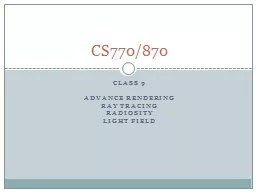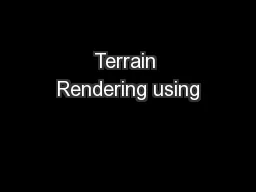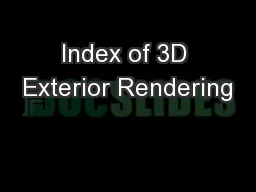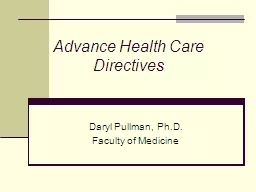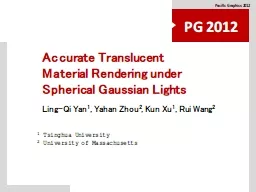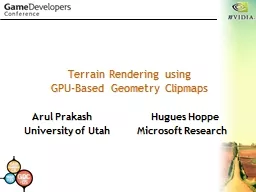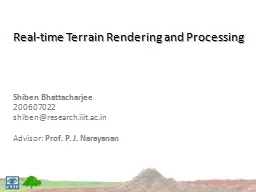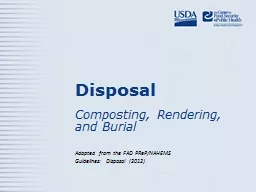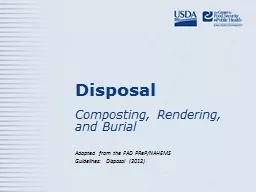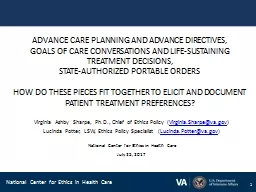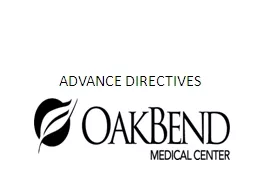PPT-Class 9 Advance rendering
Author : telempsyc | Published Date : 2020-06-15
Ray Tracing Radiosity Light field CS770870 Ray Tracing Basic idea Cast rays out 1 per pixel Calculate light at surface of first intersection Does refraction easily
Presentation Embed Code
Download Presentation
Download Presentation The PPT/PDF document "Class 9 Advance rendering" is the property of its rightful owner. Permission is granted to download and print the materials on this website for personal, non-commercial use only, and to display it on your personal computer provided you do not modify the materials and that you retain all copyright notices contained in the materials. By downloading content from our website, you accept the terms of this agreement.
Class 9 Advance rendering: Transcript
Download Rules Of Document
"Class 9 Advance rendering"The content belongs to its owner. You may download and print it for personal use, without modification, and keep all copyright notices. By downloading, you agree to these terms.
Related Documents

